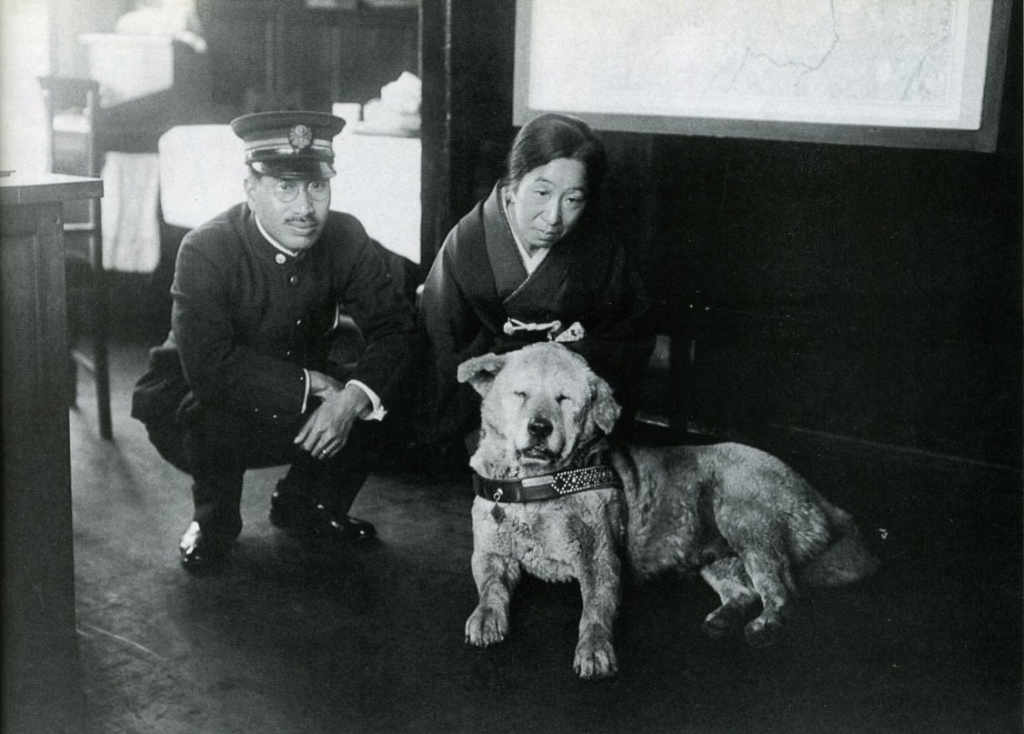There are lots of adjectives starting with ‘T’ which might be applied to Tokyo – thrilling, thriving, titillating, trenchant – but one which you definitely wouldn’t apply to most of the city is tranquil. The city teems with life and noise in the sense of people, traffic and activity.
Our starting point today though was perhaps the one (vaguely) tranquil place in the city – The Hamarikyu Gardens. These gardens were the exclusive preserve of the Shoguns. Shogun was a title of the military rulers of Japan from 1185 to 1868, though for some of the 12th century even the Shogun were essentially figureheads with power in the hands of Shikken. The Shoguns were appointed by the Emperor and effectively were the rulers of the country. This obviously gave them enormous power and influence and in 1654, Tokugawa Tsunashige, the younger brother of Shōgun Tokugawa Iemitsu got permission to reclaim land from Edo Bay (Edo was the name of Tokyo up until 1868). He built a villa and garden on this land and over time this became a secondary residence for the Shoguns where they indulged their passions for tea (there were lots of tea houses on the site) and falconry, though not necessarily in that order!
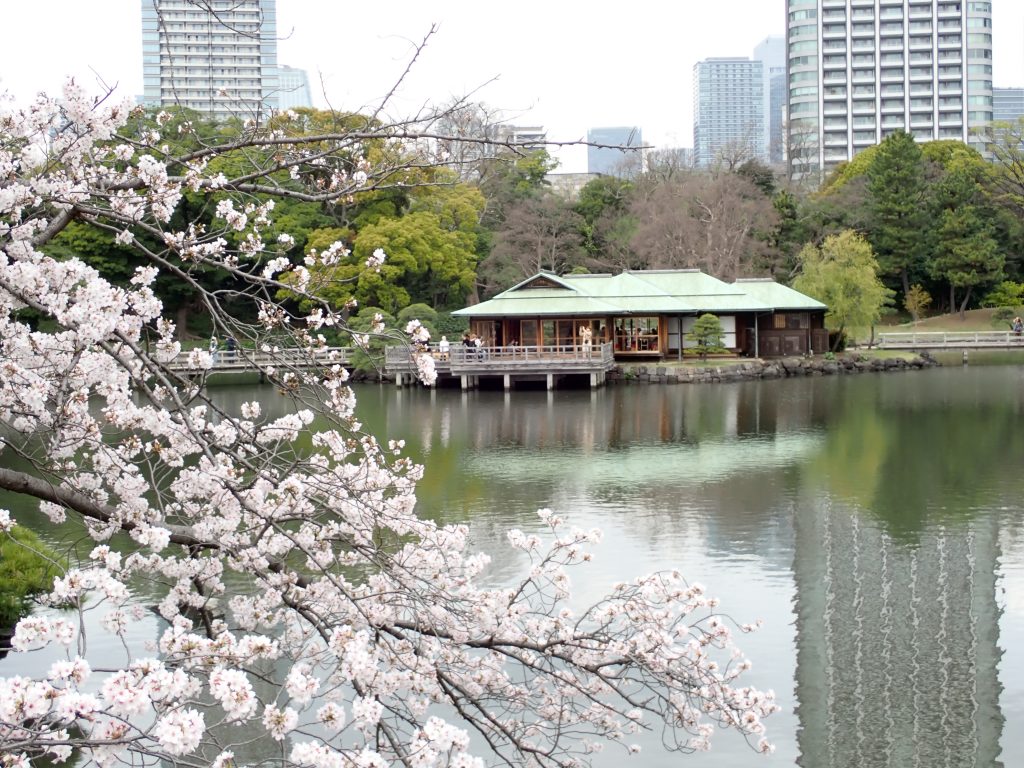
In the Meiji Restoration in 1868, power shifted from the Shoguns back to the Emperor and it is sometimes called the Meiji Revolution. The revolution came about as a result of a series of trade treaties signed with western powers – in particular with America but also, as a result of American pressure with France, Britain, Netherlands and Russia. These became known as the ‘unequal treaties’ and it isn’t difficult to guess who did best out of them. This national humiliation led to the restoration of Imperial rule to try and strengthen Japan’s position and from then on Edo became Tokyo. The gardens and houses became known from this point on as Hama-Rikyu (previously they were called Hama-Goten – ‘Beach Palace’) and were taken over as a detached palace of the Imperial family – it seems you can never have too many palaces! In the war the gardens and houses were badly bombed and damaged and in 1945 the Imperial Family generously donated the wreckage to the City of Tokyo. After restoration, they opened in their current form in 1946.

The gardens were full of tidal ponds and tea houses and of course, once again, cherry blossom. We had an hour or so wandering around before heading back onto the bus to have the peace and tranquillity firmly shattered.
Our next stop was the Asakusa Sensoji Temple or officially Kinryū-zan Sensō-ji. This is an ancient Buddhist Temple in the Taito district of Tokyo and is a huge site. It is said that it was built because two brothers who were fishermen fished a golden statue out of the river Sumida. The village chief took this as a sign and apparently remodelled his house into a temple to the statue so that people could worship it. This was around 645AD, but apparently thanks to a dream by a renowned Buddhist priest, the statue has to be hidden from human view and this has been the case since 645AD, so it is tempting to think of it as Schrodingers statue – is it there or not ….. ? The temple itself is dedicated to the subject of the statue, the bodhisattva Kanno. A bodhisattva is a person who is on the path towards bodhi (‘awakening’) or Buddhahood.
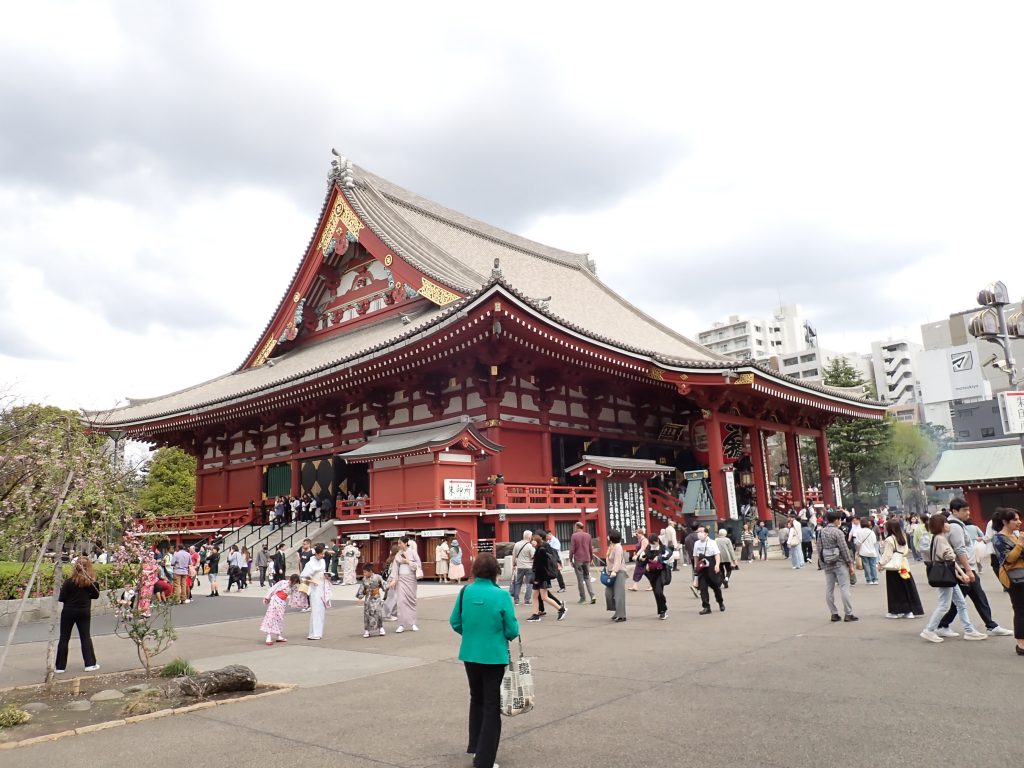
The complex was heaving with people and the worship taking place seemed to be more of the Instagram/social media variety than Buddhist, but nevertheless, it was clear that it was a very important site to many and a very important backdrop to the others! As well as the main hall with (?) the statue, there were various gates, smaller temples all surrounded by the greatest symbol of western culture – shops and market stalls. It was a substantial site and intriguing. The presence of a number of people in traditional kimonos added to the atmosphere, though that particular bubble was burst when we walked just outside the complex and saw a series of kimono rental shops!
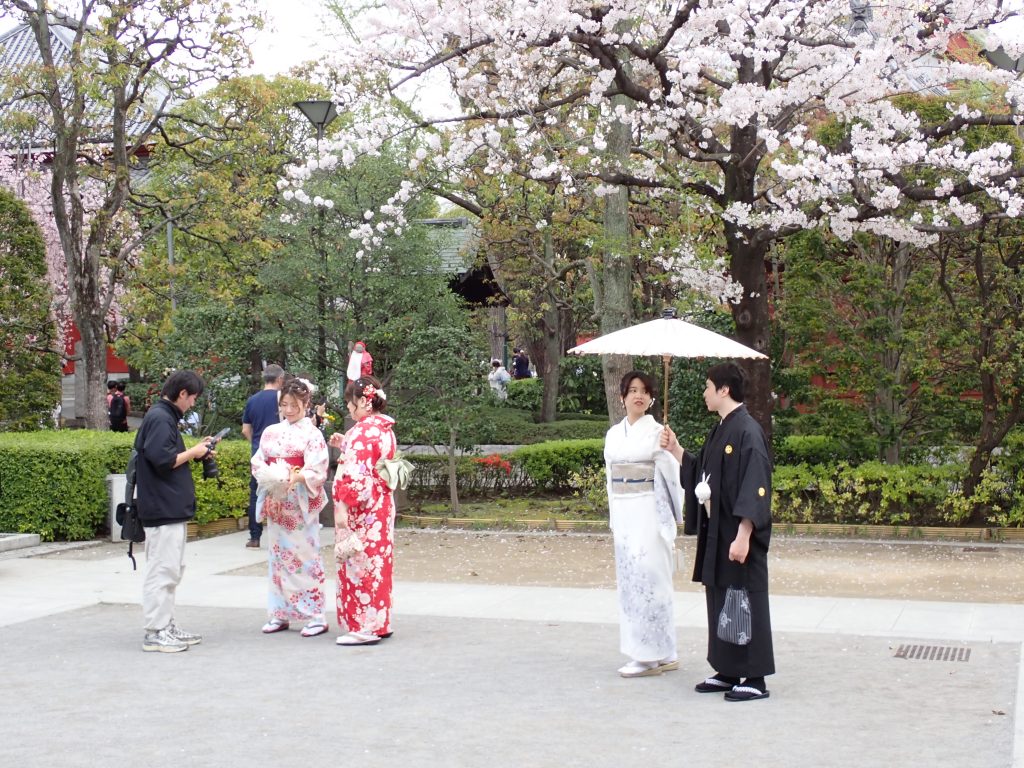
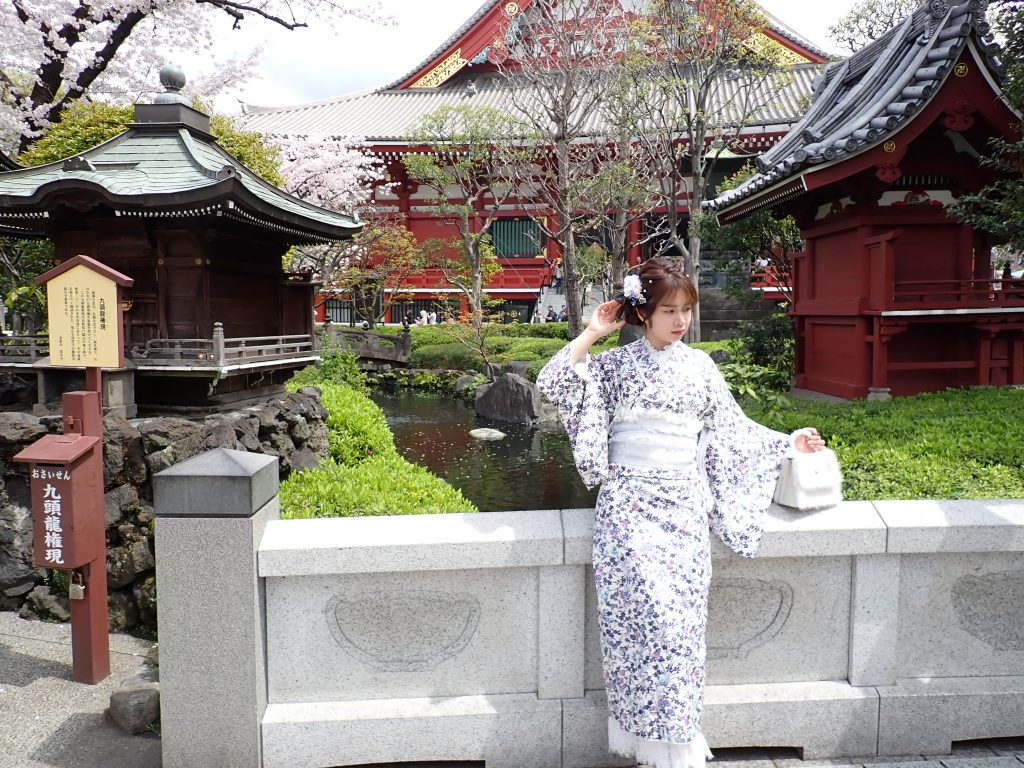
The next stop was a very important Shinto Shrine – the Meiji shrine. It is dedicated to the deified spirits of Emperor Meiji (he of the revolution fame) and his wife, Empress Shōken. His grave is not there though, that is south of Kyoto. The shrine was originally dedicated in 1920 after a massive community building project, but this was sadly destroyed in the Tokyo air raids in WWII, so the version we saw was built in 1958 after a massive public fund-raising effort. Shinto is regarded as Japan’s indigenous religion and one of the oldest in the world, though there is quite significant diversity of belief and practice within believers.
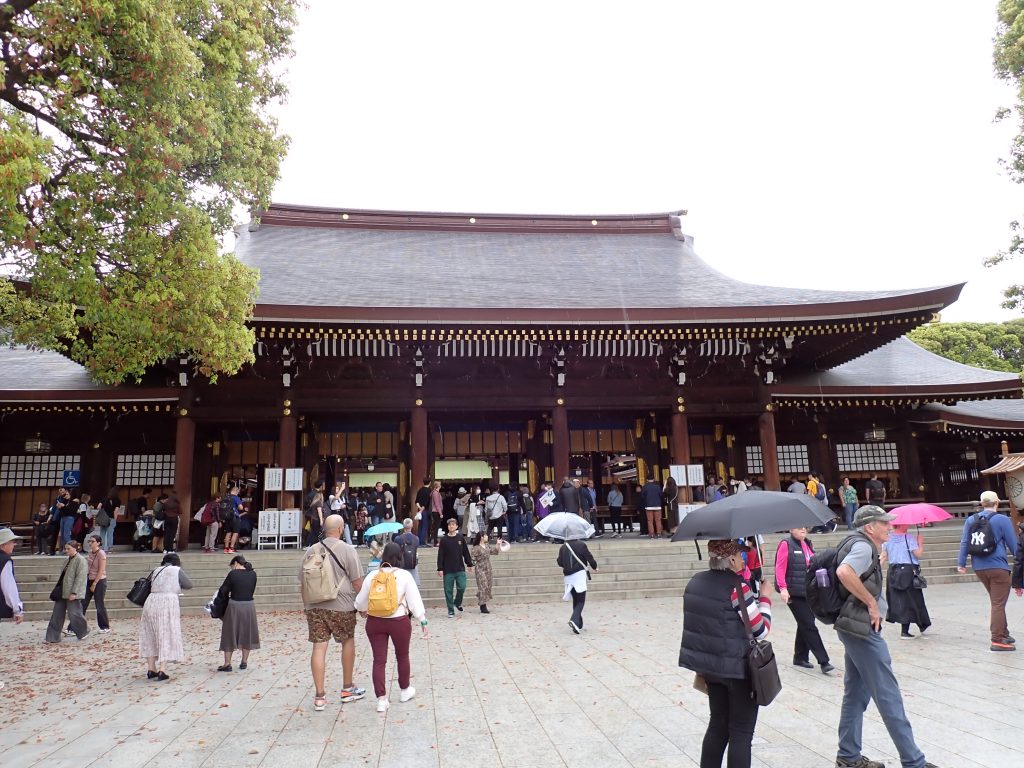
The final stop was the Shibuya Crossing. This is reckoned to be the busiest pedestrian crossing in the world with as many as 3,000 people crossing at a time. One architecture professor said that the Shibuya Crossing is “a great example of what Tokyo does best when it’s not trying.” After seeing it, I am not sure I would want to see Tokyo when it is trying! The unique feature of it is that all the traffic is stopped at once and pedestrians just head any and every which way resulting in it being called a scramble crossing. The volume of people is apparently maintained throughout the day and despite all the traffic being stopped at once, there are rarely traffic jams. The feeling of being hustled and bustled around the roads does take some getting used to though.

Close to the crossing is a statue of a dog called Hachikō. He was an Akita dog who was a pet of a Tokyo University professor. Every morning Hachikō would walk to the station with his owner as he went to work and in the evening he would go back to Shibuya Station to wait for his owner to come back from work. This went on for over a year, but sadly one day his owner (Hidesaburō Ueno) died of a cerebral hemorrhage while at work. Despite this Hachikō kept returning to the station every day for 10 years to wait for his owner to come back! He is held up in Japanese culture as a good example of loyalty and fidelity. His persistence is now recognised in the form of a statue ……
